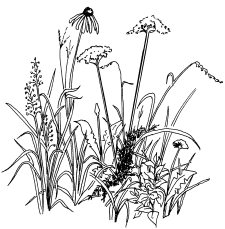
Indicator Species
Northern Crayfish Frog: Lithobates areolatus
IUCN (International Union for the Conservation of Nature) status: Near threatened.
Natural History:
This species hides in crayfish, reptile, or rodent burrows when inactive. Shows ability to adapt somewhat to loss of native habitat (sometimes found on golf courses, hay pastures), but does not fair well with high intensity agriculture (corn, soybeans, etc). Feeds on invertebrates including insects, spiders, crayfish, larvae. Sometimes preyed upon by mammals such as raccoons, opossum, or birds of prey such as hawks or owls. Primary population threat is loss of habitat.
Habitat:
Dependent on grassland ecosystems, especially seasonally moist grasslands and those with temporary water sources.
Range:
http://maps.iucnredlist.org/map.html?id=58546
Links:
http://mdc.mo.gov/discover-nature/field-guide/northern-crawfish-frog
https://en.wikipedia.org/wiki/Crawfish_frog
http://www.iucnredlist.org/details/58546/0
https://www.youtube.com/watch?v=cQ1IaoUSnus
Guiding questions for predicting the future of this species at Tucker Prairie:
-
Does this species account lend evidence to support the ability to adapt to changing vegetation, soil moisture, and climate?
-
Are the habitat requirements for this species broad or specific?
-
What is your prediction for the success of this species at Tucker Prairie if climate change results in a gradual conversion of Tucker Prairie from native prairie to shrubs and eventually woodland?
-
What does this species eat? What other species eats the Northern Crayfish Frog?
-
Why should we care about changes in the population of an amphibian like the Northern Crayfish Frog? Socially is this important or not? Why?
-
Refer to the rangemap shown above. Why is there a large area in southeast Missouri in which this species is absent? How might this apply to the situation of a changing climate at Tucker Prairie?



